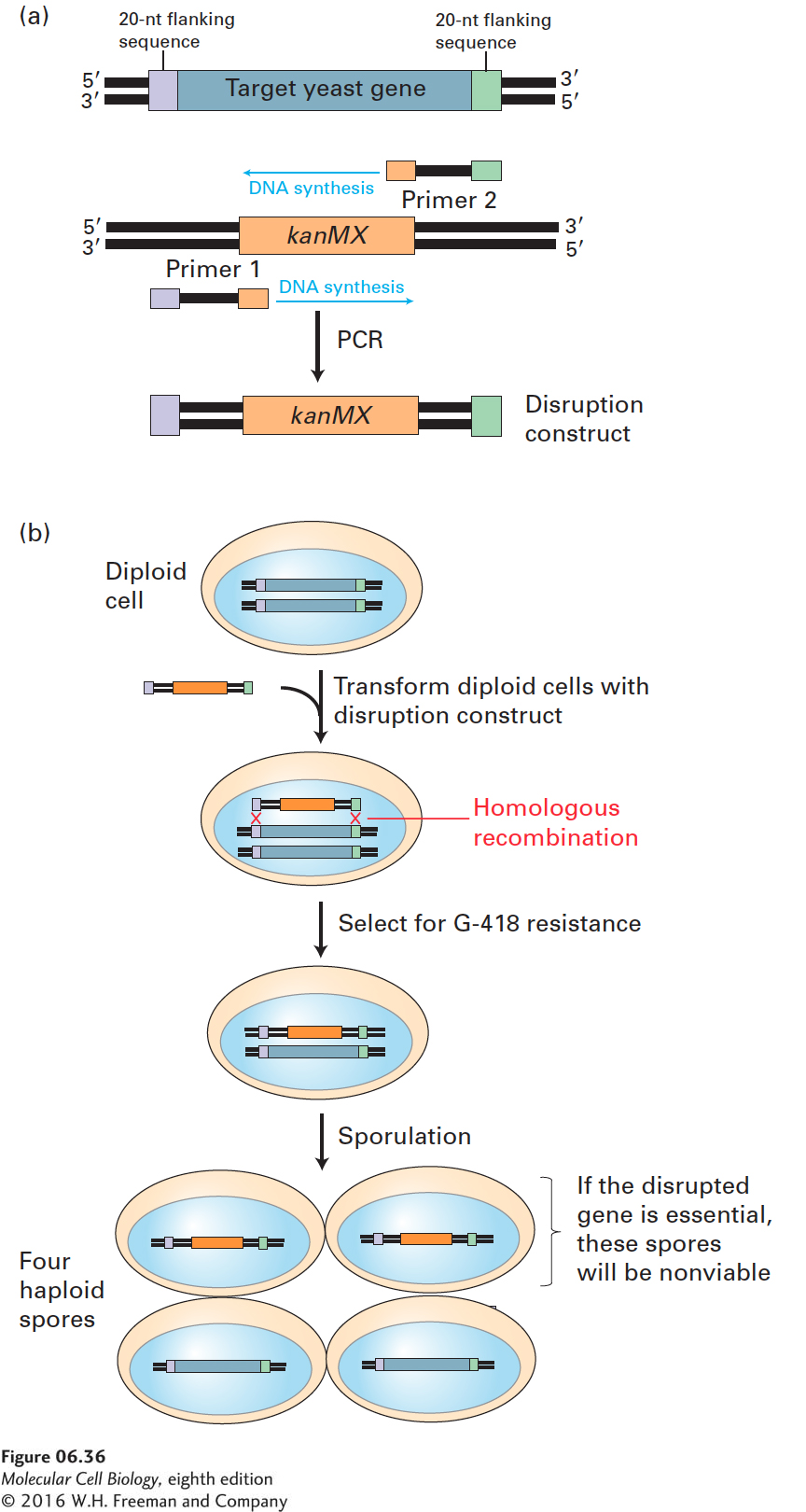
EXPERIMENTAL FIGURE 6- 36 Homologous recombination with transfected disruption constructs can inactivate specific target genes in yeast. (a) A suitable construct for disrupting a target gene can be prepared using PCR. The two primers designed for this purpose each contain a sequence of about 20 nucleotides (nt) that is homologous to one end of the target yeast gene as well as sequences needed to amplify a segment of DNA carrying a selectable marker gene such as kanMX, which confers resistance to G- 418. (b) When recipient diploid Saccharomyces cells are transformed with the disruption construct, homologous recombination between the ends of the construct and the corresponding chromosomal sequences integrates the marker gene into the chromosome, replacing the target- gene sequence. The recombinant diploid cells will grow on a medium containing G- 418, whereas untransformed cells will not. If the target gene is essential for viability, half the haploid spores that form after sporulation of recombinant diploid cells will be nonviable.
[Leave] [Close]